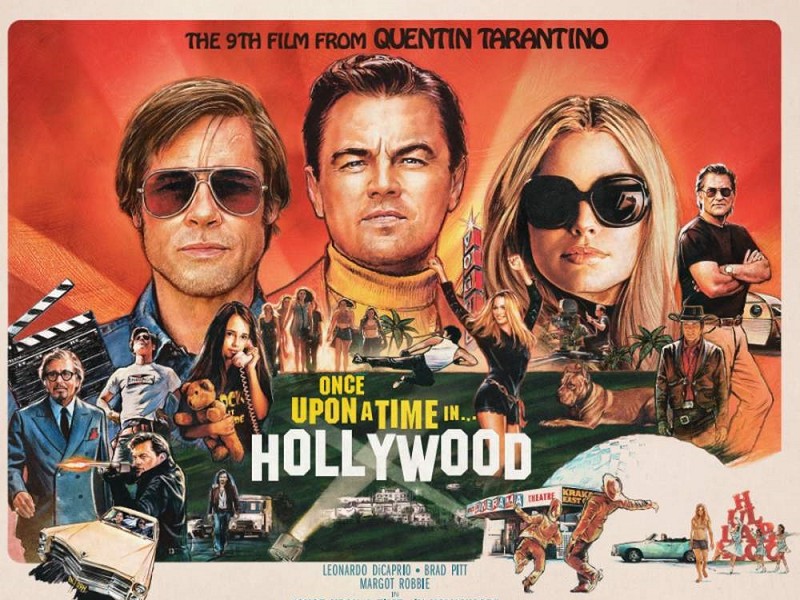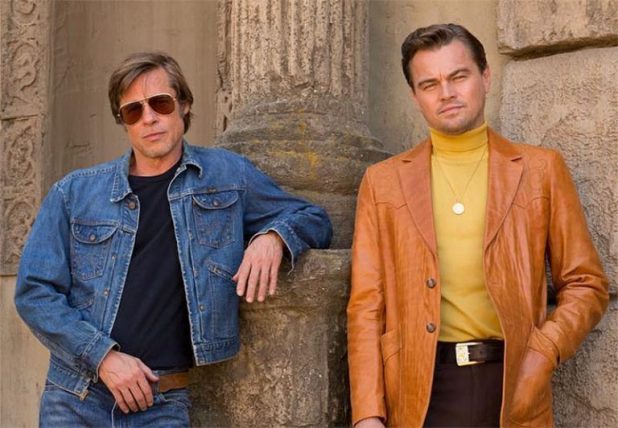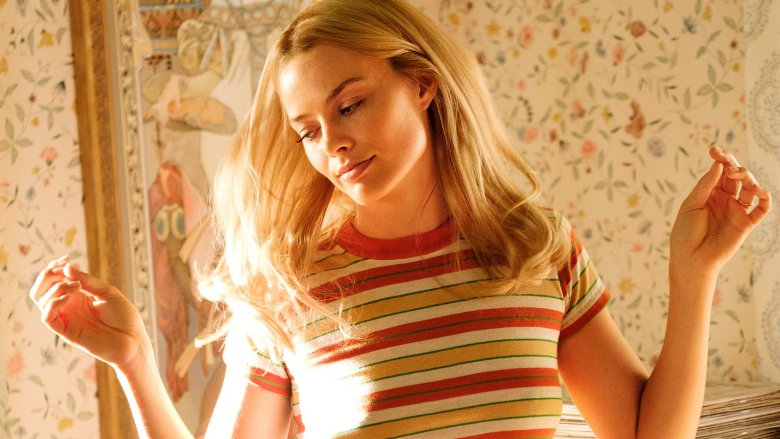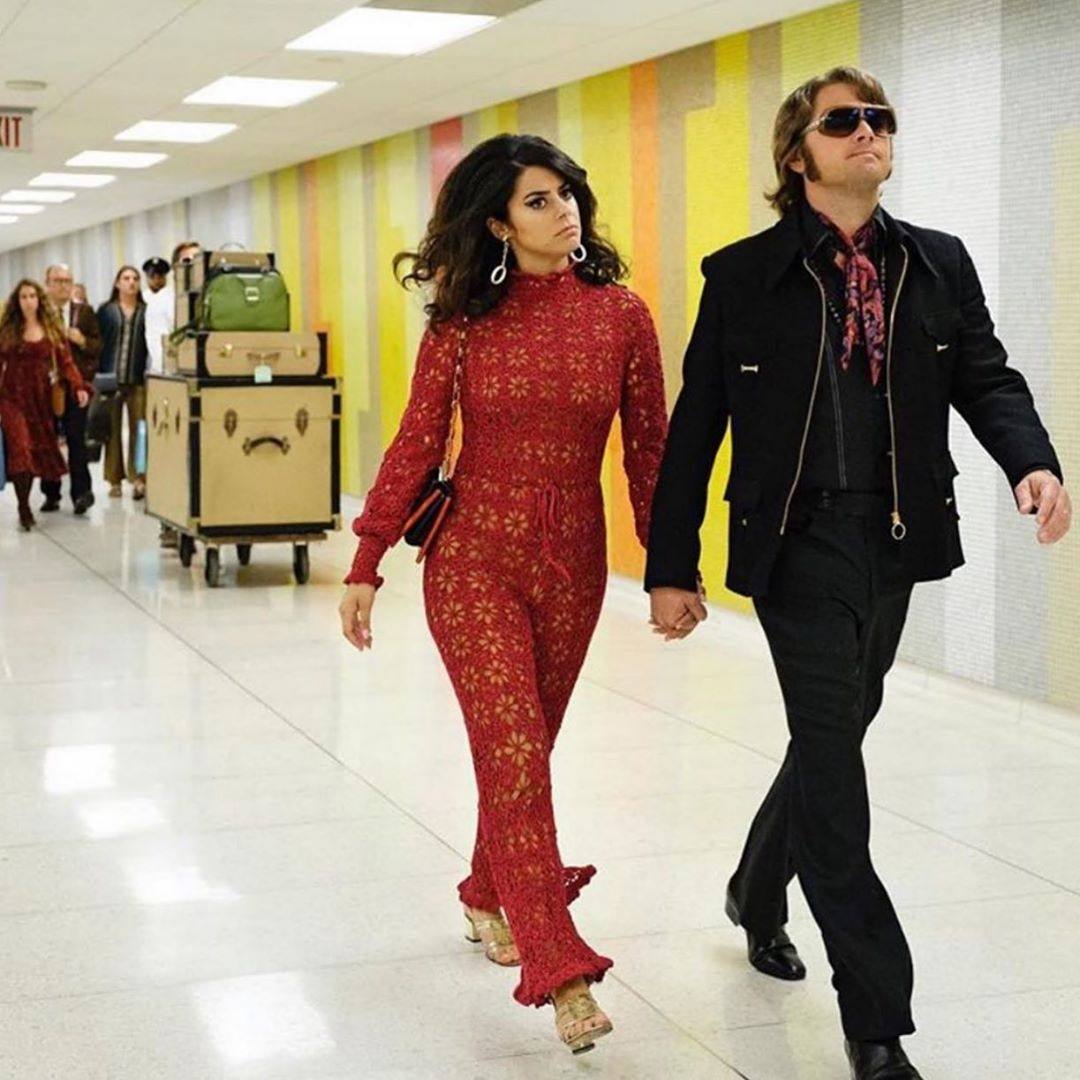Once Upon A Time In Hollywood || Tarantino and Aesthetic

In the world of cinema, there are few things that come as anticipated as a new Quentin Tarantino film. Film critics and fanatics practically dribble at the idea of shiny-new lengthy masterpiece sitting pretty in the cinema just waiting to be torn apart with analysis.
And, there have always been certain things that makes a classic Tarantino film - a Tarantino. Brutal violence, nonlinear story-lines, satirical subject matter and lengthy scenes of complex dialogue between an ensemble cast, are all those recognisable traits of a good ol' Tarantino film. Throw in a few pop culture references and a few bars of 20th century music and you've got yourself the full Tarantino experience. But it's not just these trademarks that make Tarantino's films the 'cool' classics they are today. It's how he cleverly stitches all of these elements together to create not only incredible 'aesthetically pleasing' films - but films, I promise, you will never forget.
And, there have always been certain things that makes a classic Tarantino film - a Tarantino. Brutal violence, nonlinear story-lines, satirical subject matter and lengthy scenes of complex dialogue between an ensemble cast, are all those recognisable traits of a good ol' Tarantino film. Throw in a few pop culture references and a few bars of 20th century music and you've got yourself the full Tarantino experience. But it's not just these trademarks that make Tarantino's films the 'cool' classics they are today. It's how he cleverly stitches all of these elements together to create not only incredible 'aesthetically pleasing' films - but films, I promise, you will never forget.
Once Upon A Time In Hollywood, the 9th film by Tarantino and almost three hours long, has been his biggest box office success in the UK so far and is quickly becoming a cult classic. This film is seriously being talked about everywhere and everyone is not only raving about the stunning performances (we'll come to that later), but - as always with Tarantino - his underlying meanings, with many critics and creators racing to publish 25 Things You Missed and The Truth Behind Tarantino's 9th Film. But for now, let's take a look at the incredible visual choices of Tarantino and how they've come together to aid this film in becoming a favourite for many film-fanatics around the world already.

CAST & PERFORMANCE
Set in the late 1960's Los Angeles, Once Upon A Time In Hollywood tells the story of Rick Dalton, a once famed star of Westerns whose career seems to be plummeting fast as the sun sets on the Golden Age of Hollywood. Dalton and his stunt double Cliff Booth, navigate Hollywood together and the narrative follows the two characters as their lives become dangerously intertwined (I hate that word, sorry I just do), with the actions of the infamous Manson Family. And why you might ask? Well, Rick just happens to live next door to Roman Polanski and his angelic wife Sharon Tate.
Featuring the fabulously star-studded cast of living legend Leonardo DiCaprio (Rick Dalton), Brad Pitt (Cliff Booth), Margot Robbie (Sharon Tate), Dakota Fanning, Damian Lewis, Austin Butler, Kurt Russel and flipping Al Pacino - this film is far from his humble beginnings with independent debut, Reservoir Dogs. You can see from the first few scenes this is a big budget film, with huge sets and a large, especially celebrated cast. And, of course, we all know that Tarantino loves to re-use actors he's worked with in the past - from Brad Pitt in Inglorious Bastards to Kurt Russel in The Hateful Eight, this film almost seems to be Tarantino's 'best bits' of all his favourite actors (just missing Samuel L. Jackson), featuring in it from starring roles to small cameos.
The stand out performance for me, came from Brad Pitt. The essence of cool. Even down to what he wears. I know everyone will rave about Leonardo DiCaprio's incredible work (and it was incredible, oozing personality and natural comedy), but Brad Pitt seemed to literally and metaphorically be the unsung hero of this film. His scenes might not have always been as intense or emotional as DiCaprio's (perhaps the 'charity case' of the film), but dammit he was charismatic and so magnetic on screen. The relationship between the two is of course a highlight, they bounce off one another perfectly and as a viewer, it reminded me of what the term 'movie star' really means.
The film is basically a fairy tale (hence the title) where the fictional characters essentially have supernatural strengths and abilities seen throughout the film even if you don't realise it (most obviously where they 'save the day' at the end). Cliff wins in a fight against Bruce Lee and is able to effortlessly leap onto Rick's roof to fix the satellite. He's a human superhero and Pitt plays him as one. A really, really cool one.**
Margot Robbie presented Sharon Tate effortlessly, sure it can be argued Tarantino didn't let all viewers into the Manson story enough, but even though Robbie had little dialogue in the film, she was still able to depict Tate just through living with that quiet joy and almost child-like blissfulness Tate had.
**this of course is very interesting as DiCaprio's character spends a large amount of the film pretending to be a hero as an actor. But really, Pitt's character is the hero, not on film sets but in real life. There is a contrast between what happens on the movie sets and in real life - DiCaprio's character is pretending to be a villain and trying to create tension and fear. This is happening in real life to Pitt's character. Stunt double Cliff Booth is the real-life all-American hero celebrated actor Rick Dalton has been trying to portray for years.
**this of course is very interesting as DiCaprio's character spends a large amount of the film pretending to be a hero as an actor. But really, Pitt's character is the hero, not on film sets but in real life. There is a contrast between what happens on the movie sets and in real life - DiCaprio's character is pretending to be a villain and trying to create tension and fear. This is happening in real life to Pitt's character. Stunt double Cliff Booth is the real-life all-American hero celebrated actor Rick Dalton has been trying to portray for years.

CINEMATOGRAPHY
Angles. We all know Tarantino loves a good edgy-as-hell angle. The weirder the better, the more intense the better, the closer we can get to an actors sweating face - the better. In Once Upon A Time In Hollywood Tarantino uses bold, beautiful shots constantly and re-uses multiple shots with different characters to foreshadow his alternate ending (I loved this!!) Perspective is key to Tarantino, he wants you to feel you are part of the action as a viewer: you are the victim, (proved through his love of the iconic 'trunk shot'), the protagonist (talking through the window to Brad Pitt in this instance) and even the villain (or as close to the villain as possible.) This was seen over and over again in Once Upon A Time In Hollywood - we're sitting in the passenger seat with Pitt, viewing a film in the cinema with Robbie, watching TV with DiCaprio and packing a suitcase with Robbie. As a viewer, you don't feel removed from the film - you're part of it and experiencing all of the emotion and turmoil the characters experience. Which in modern cinema, seems to be a truly unique experience.

A 'QUICK' NOTE ON TENSION (I had to.)
The use of foreshadowing was also so cleverly done, sometimes incredibly obvious and other times so subtle and insignificant. It all builds to the slow-burning tension of the the film - arguably the most appealing factor to audiences after watching. Due to the revision of history, the viewer makes clear assumptions - all of which are thrown out the window by Tarantino. He builds the viewers relationships with the two main characters and we expect them to be either punished for their disrespect of the Manson clan or caught in the cross fire - neither of which happen.
Tarantino also builds tension in the build up to the climatic event at the end of the film - acid-dipped cigarettes, other drugs and alcohol are all taken by the characters so we assume they will be defenceless against the inevitable attack. The use of time-stamps also make it all feel so much more real, we know what it going to happen and the time-stamps and narration of clear facts are illustrating that this was all real. This whole 'set-up' is unexpectedly flipped on its head and we end at a heroic point where the two characters we have fallen in love with (Pitt and DiCaprio) save the day.
The use of foreshadowing was also so cleverly done, sometimes incredibly obvious and other times so subtle and insignificant. It all builds to the slow-burning tension of the the film - arguably the most appealing factor to audiences after watching. Due to the revision of history, the viewer makes clear assumptions - all of which are thrown out the window by Tarantino. He builds the viewers relationships with the two main characters and we expect them to be either punished for their disrespect of the Manson clan or caught in the cross fire - neither of which happen.
Tarantino also builds tension in the build up to the climatic event at the end of the film - acid-dipped cigarettes, other drugs and alcohol are all taken by the characters so we assume they will be defenceless against the inevitable attack. The use of time-stamps also make it all feel so much more real, we know what it going to happen and the time-stamps and narration of clear facts are illustrating that this was all real. This whole 'set-up' is unexpectedly flipped on its head and we end at a heroic point where the two characters we have fallen in love with (Pitt and DiCaprio) save the day.

MUSIC CHOICES
Tarantino loves some groovy tunes and we see this in Once Upon A Time In Hollywood especially. A contrast between dark, frankly terrifying tension and the joy of Hollywood - music provides viewers with the idea that this time was happy. When Sharon Tate is dancing at the Playboy party or dancing around her bedroom elated, we see her happiness and blissful ways as a character. But whenever the golden age rock'n'roll music stops or is cut-off, tension builds and something dangerous is foreshadowed or done. The choice of cool, funky music makes this film so much cooler. It lifts the film and almost gives it a personality of its own.
Tarantino loves some groovy tunes and we see this in Once Upon A Time In Hollywood especially. A contrast between dark, frankly terrifying tension and the joy of Hollywood - music provides viewers with the idea that this time was happy. When Sharon Tate is dancing at the Playboy party or dancing around her bedroom elated, we see her happiness and blissful ways as a character. But whenever the golden age rock'n'roll music stops or is cut-off, tension builds and something dangerous is foreshadowed or done. The choice of cool, funky music makes this film so much cooler. It lifts the film and almost gives it a personality of its own.

COLOUR AND LIGHT
Tarantino's use of colour is slowly becoming my go-to topic of conversation. I could literally rant about it for days on end and still not be done. This film uses colour especially well and is probably one of the reasons many are drawn to it in the first place. All of the artwork and posters are reminiscent of posters from the Golden Age of Hollywood (think Singing In The Rain and A Fistful Of Dollars) and of course, use those vivid reds and saturated yellows to draw attention and possible foreshadow a mix of danger and joy. The film itself is a mass of colour, perhaps to reflect Tarantino's love of this time in film and the radiance of the era generally.
Even the costumes and fabrics are so representative of the characters. The first glance we see of Pitt and DiCaprio's characters - Cliff is all in denim, a little rough around the edges with longer hair, teardrop sunglasses and generally an all-American appearance. His worn out shoes show he isn't interested in appearance - he prefers comfort and he isn't self-indulgent in that way. Already we like him. Dalton (DiCaprio) is in a polished outfit with a crisp leather jacket, trendy roll-neck with hair gelled and trousers pressed. He's obviously much more wealthy and finds importance in appearance. The colours worn by both men are earthy and natural, a contrast to the vibrant and bold colours surrounding them.
The whole film also has a significant 'yellow glow' to it. The lighting used is mostly natural when around Cliff Booth and often artificial around Rick Dalton, except when he is acting - when he is trying to act the character Cliff Booth really is.
In moments of tension or stress, the lighting is also artificial - yellow light-bulbs once again add to that yellow glow. Perhaps just to literally reflect the idea of this being the Golden Age of Hollywood. Or maybe I'm just coming up with puns because I'm not clever enough to come up with anything else.

Even the costumes and fabrics are so representative of the characters. The first glance we see of Pitt and DiCaprio's characters - Cliff is all in denim, a little rough around the edges with longer hair, teardrop sunglasses and generally an all-American appearance. His worn out shoes show he isn't interested in appearance - he prefers comfort and he isn't self-indulgent in that way. Already we like him. Dalton (DiCaprio) is in a polished outfit with a crisp leather jacket, trendy roll-neck with hair gelled and trousers pressed. He's obviously much more wealthy and finds importance in appearance. The colours worn by both men are earthy and natural, a contrast to the vibrant and bold colours surrounding them.
The whole film also has a significant 'yellow glow' to it. The lighting used is mostly natural when around Cliff Booth and often artificial around Rick Dalton, except when he is acting - when he is trying to act the character Cliff Booth really is.
In moments of tension or stress, the lighting is also artificial - yellow light-bulbs once again add to that yellow glow. Perhaps just to literally reflect the idea of this being the Golden Age of Hollywood. Or maybe I'm just coming up with puns because I'm not clever enough to come up with anything else.

____________________________________________________________________________
This film was paying homage to the Golden Age of Hollywood (a kind of nostalgic love letter if you like), mixing fictitious characters and real-life events to revise the tragedy we all know, and in-turn revise the end to the Golden Age of Hollywood. A more tender message than we're used to with Tarantino I know, but don't worry. There's plenty of grit and satire sprinkled in there too.
~ Grace ~



Comments
Post a Comment